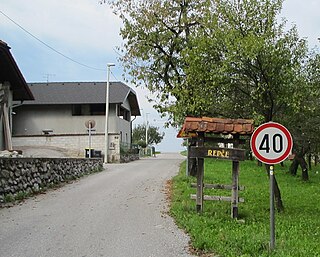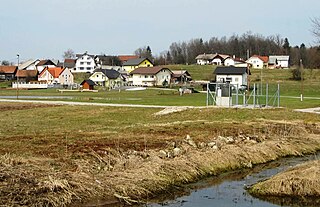| Malo Trebeljevo | |
|---|---|
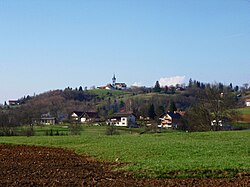 | |
| Coordinates: 46°1′2.71″N14°44′5.01″E / 46.0174194°N 14.7347250°E Coordinates: 46°1′2.71″N14°44′5.01″E / 46.0174194°N 14.7347250°E | |
| Country | |
| Traditional region | Lower Carniola |
| Statistical region | Central Slovenia |
| Municipality | Ljubljana |
| Area | |
| • Total | 2.81 km2 (1.08 sq mi) |
| Elevation | 567.3 m (1,861.2 ft) |
| Population (2002) | |
| • Total | 134 |
| [1] | |
Malo Trebeljevo (pronounced [ˈmaːlɔ tɾɛbɛˈljeːʋɔ] ; German : Kleintrebeleu [2] ) is a small settlement in the hills east of Ljubljana, the capital of Slovenia. It belongs to the City Municipality of Ljubljana. It was part of the traditional region of Lower Carniola and is now included with the rest of the municipality in the Central Slovenia Statistical Region. [3]

German is a West Germanic language that is mainly spoken in Central Europe. It is the most widely spoken and official or co-official language in Germany, Austria, Switzerland, South Tyrol (Italy), the German-speaking Community of Belgium, and Liechtenstein. It is also one of the three official languages of Luxembourg and a co-official language in the Opole Voivodeship in Poland. The languages which are most similar to German are the other members of the West Germanic language branch: Afrikaans, Dutch, English, the Frisian languages, Low German/Low Saxon, Luxembourgish, and Yiddish. There are also strong similarities in vocabulary with Danish, Norwegian and Swedish, although those belong to the North Germanic group. German is the second most widely spoken Germanic language, after English.
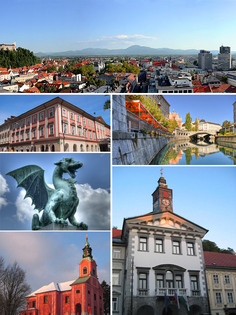
Ljubljana is the capital and largest city of Slovenia. It has been the cultural, educational, economic, political, and administrative centre of independent Slovenia since 1991.
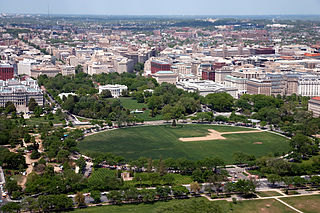
A capital city is the municipality exercising primary status in a country, state, province, or other administrative region, usually as its seat of government. A capital is typically a city that physically encompasses the government's offices and meeting places; the status as capital is often designated by its law or constitution. In some jurisdictions, including several countries, the different branches of government are located in different settlements. In some cases, a distinction is made between the official (constitutional) capital and the seat of government, which is in another place.
South of the settlement, by Besnica Creek, a Roman-period burial ground has been discovered. It is likely associated with a nearby villa rustica. [4]

In historiography, ancient Rome is Roman civilization from the founding of the Italian city of Rome in the 8th century BC to the collapse of the Western Roman Empire in the 5th century AD, encompassing the Roman Kingdom, Roman Republic and Roman Empire until the fall of the western empire. The civilization began as an Italic settlement in the Italian Peninsula, conventionally founded in 753 BC, that grew into the city of Rome and which subsequently gave its name to the empire over which it ruled and to the widespread civilisation the empire developed. The Roman Empire expanded to become one of the largest empires in the ancient world, though still ruled from the city, with an estimated 50 to 90 million inhabitants and covering 5.0 million square kilometres at its height in AD 117.

A cemetery or graveyard is a place where the remains of dead people are buried or otherwise interred. The word cemetery implies that the land is specifically designated as a burial ground and originally applied to the Roman catacombs. The term graveyard is often used interchangeably with cemetery, but a graveyard primarily refers to a burial ground within a churchyard.

Villa rustica was the term used by the ancient Romans to denote a villa set in the open countryside, often as the hub of a large agricultural estate (latifundium). The adjective rusticum was used to distinguish it from an urban or resort villa. The villa rustica would thus serve both as a residence of the landowner and his family and also as a farm management centre. It would often comprise separate buildings to accommodate farm labourers and sheds and barns for animals and crops. In modern British archaeology, a villa rustica is commonly referred to simply as a "Roman villa".








